After breakfast, you will be transferred to the airport for your flight to Ahmedabad.
At Ahmedabad airport, you will be met by our naturalist and driver and driven 20 kms to the nearby Thol Lake Bird Sanctuary. The sanctuary is a shallow freshwater reservoir surrounded by marshes and scrubby forest and is home to more than 100 species of birds. Cranes (including India's Saras crane), geese, flamingoes, pelicans, egrets, herons, spoonbills, ducks, whistling teals and many other migratory birds nest and breed here.
From here you will be driven to Little Rann of Kutch where you will check in to your hotel.
(If you are interested in visiting the Wild Ass Sanctuary en route that is a possibility that could be investigated but time might be a problem)
In the evening you will be taken on a birding safari. On this safari, you will have the opportunity to see crested and Sykes larks, the oriental skylark, greater short-toed lark, singing and Indian bush larks, ashy-crowned and black-crowned sparrow-larks, as well as the greater hoopoe lark. Other likely sightings include desert and variable wheatears; southern grey-, long-tailed-, rufous-tailed-, and bay-back shrike; the common wood shrike; and the desert warbler.
You will also look for chestnut-bellied sandgrouse, Indian courser, quails, yellow-legged and barred buttonquails, grey francolin, wryneck, brown-rock chat, pied bushchat, black redstart and buntings in the scrubby areas.
At sunset, it is possible to watch marsh, Montagu, and pallid harriers, aquila eagles, falcons and buzzards heading for their roosting sites.
Dinner in your hotel at Little Rann of Kutch
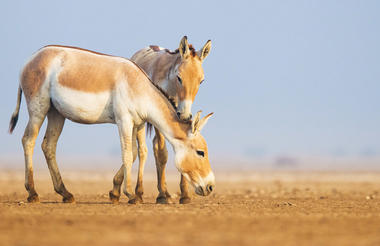
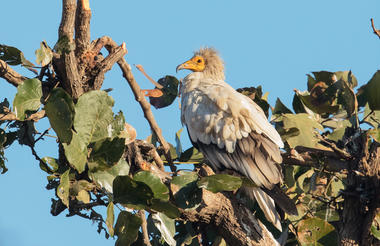
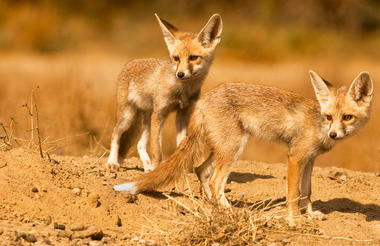
Today is a full day of safaris, morning and afternoon in the Little Rann of Kutch.
Morning - local bird sightings
Afternoon - safari to Nawa Talao, a lake where demoiselle and common cranes gather in large numbers during winter, Greater and Lesser flamingos are seen in large numbers, as are Great White and Dalmatian pelicans. Painted-, open-billed-, wooly-necked -, white-, black - and black-necked storks could be seen along with black, glossy and black-headed ibis. Northern pintail, common teal, spot-billed duck, mallard, gadwall, wigeon, garganey, shoveller, cotton pygmy goose, pochards, tufted duck, lesser whistling duck, brahminy and comb duck are among the many visitors to the lake. Waders including pratincoles, lapwings, sandpipers, and ruff are in good numbers.
Dinner in your Little Rann of Kutch hotel
After dinner folk dance by a local community called mirs
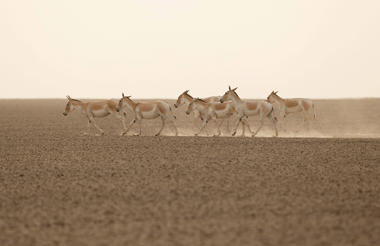
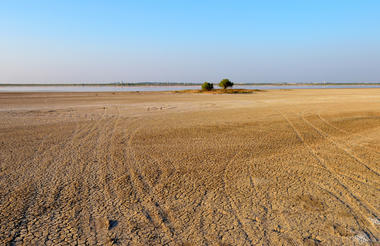
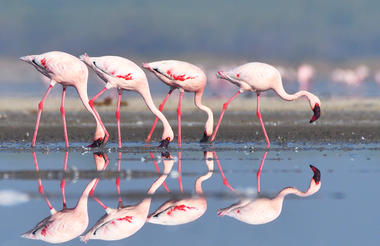
Today is another full day of birding safaris in the Rann of Kutch.
Today's drives could show you Macqueen's bustard; long-legged, common and white-eyed buzzards; booted eagle; Bonelli's eagle; and the short-toed snake eagle.
*** Guests can opt for a camel cart village ride instead of the afternoon safari
Dinner in your Little Rann of Kutch hotel
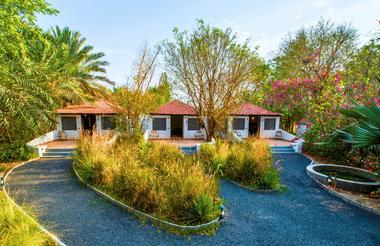
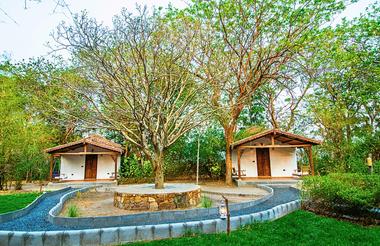
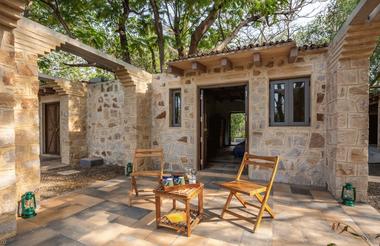
Today is an early morning check-out and drive to the Great Rann of Kutch.
There will be plenty of birds to see on your trip to Bhuj.
Check in to your Bhuj hotel by lunchtime.
In the afternoon, you will visit the roost of the Grey Hypoculius at Fulay, one of the few sites where this bird is seen in India.
Overnight Bhuj
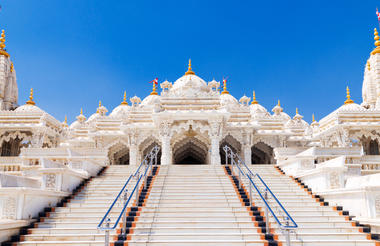
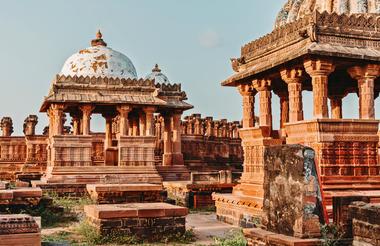
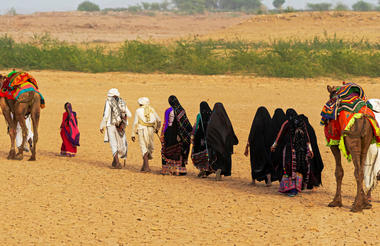
Today you will tour the Banni region, India's largest grassland area.
This is one of India's important bird areas with a great concentration of Aquila and other eagles.
The water bodies here are known for their large flocks of water fowl.
Overnight Bhuj



Today there is a day trip to the Great Indian Bustard Sanctuary near Natilya.
These grasslands are the habitat of the endangered Indian bustard; white-naped tit; Stolickza's bushchat; and a variety of other birds.
Chinkaras (deer) are likely to be seen and there is the possibility of seeing the Indian wolf.
Overnight in Bhuj



Early morning departure for Jamnagar.
Check into Jamnagar hotel by lunchtime.
Evening visit to Khijadiya Bird Sanctuary, a possible site for the Indian skimmer. This sanctuary is the breeding area for many species of birds that do not nest elsewhere in peninsular India. Great-crested grebe, black-necked stork, Caspian tern, and many other birds can be seen besides most of the species recorded in the Little Rann area.
Overnight in Jamnagar
Today is a full day of birding in the Jamnagar, Charakala Salt Ponds and coastal regions of the Gulf of Kutch, one of the finest birding stretches along the Indian coastline.
You are likely to see crab-plover, Kentish plover, oystercatcher, ruddy turnstone, broad-billed sandpiper, sanderling, dunlin, curlew sandpiper, black-headed gull, Pallas' gull, temmincks stint, lesser-crested tern, common tern, gull-billed tern, whiskered tern, littel tern, black-bellied tern, darters, western reef egret, and other birds during your drive.
Overnight in Jamnagar
Today is an early morning departure from Jamnagar and a drive to the Gir National Park.
Check in to your hotel before lunch.
After lunch take a minibus tour of the Interpretation Zone, an enclosed cross-section of Gir habitats.
The Gir National Park and Wildlife Sanctuary was stablished in 1965 and has a total area of 1412 km squares in which 258 km square area comes under “fully protected area” and 1153 km square area is for the Sanctuary. It is basically a hilly tract of dry deciduous forests, acacia scrub, evergreen and semi-evergreen flora and grasslands, fed by rivers and streams.
But it is mainly famous of the only remaining place in the world, where one is likely to see the pure Asiatic lions (Panthera leo persica). At present there are nearly 300 lions in the park.
Dinner and overnight in Gir hotel
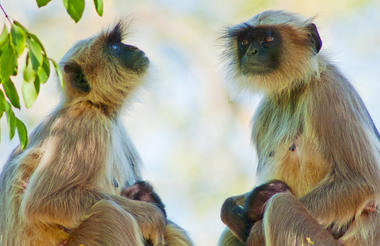
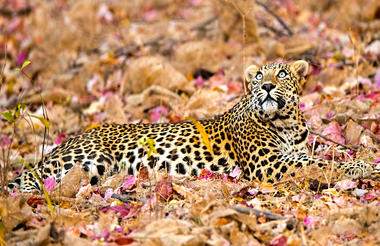
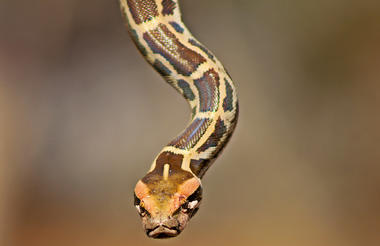
Today is a full day of safaris in the Gir National Park.
Gir is the last abode of the Asiatic lion and has a thriving population of panther, Chital, Nilgai (or Bluebull), Sambar, Four-horned Antelope, Chinkara and Wild boar. Gir is also one of the major habitats of chousingha and chinkara that are hard to spot in the teak forests along the game drive trails.
The many birds of Gir include the following:
Changeable hawk eagle; crested serpent eagle; Bonelli's eagle; shaheen peregrine falcon; laggar falcon; shikra; painted sandgrouse; quails; black-hooded and golden orioles; Marshall's and common iora; Asian paradise flycatcher; Tickell's blue-, red-throated-, verditer, and Asian brown flycatchers; yellow-crowned, brown-capped pygmy, black-rumped flameback woodpeckers; green and blue-cheeked bee-eaters; coppersmith barbet; common, lesser pied and white-throated kingfishers; blossom-headed parakeet; hoopoe; black, ashy and white-bellied drongos; rufous treepie; large cuckoo shrike; small minivet; red-vented and white-eared bulbul; tawny-bellied, yellow-eyed, jungle and large grey babblers; grey-breasted, ashy, rufous-fronted, plain, jungle and graceful prinias; zitting cisticola; clamorous reed-warbler; booted warbler; greenish warbler; lesser and Hume's warbler; orphean warbler and Blyth's reed warbler.
Dinner and overnight in Gir hotel
Post dinner Sidi dance by local tribals of African origin.
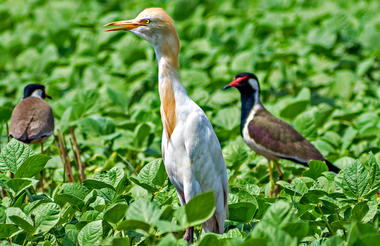
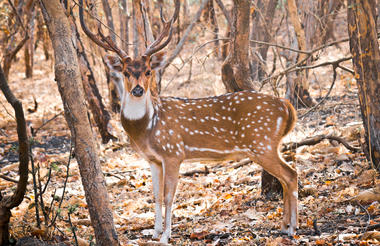
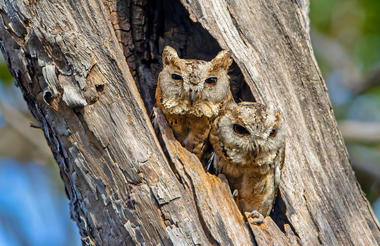
Today there is an early morning departure from Gir. You will be transferred to Bhavnagar by lunchtime when you will check into your hotel.
After lunch you will depart for a safari in Blackbuck National Park, Velavadar. The Park was formerly the private grassland of the Maharaja of Bhavnagar, where he would hunt blackbucks with his famous hunting cheetahs. The blackbuck for which the park was created lives mostly in the grasslands on the northern side. Found only in South Asia, the blackbuck once lived all across India, but now the largest population is here, and few are found outside Gujarat.
Other animals in the sanctuary include the nilgai (another Indian antelope), jackal, wolf, jungle cat, and fox, but the other main attraction is the bird life.
In the park you will have the opportunity to see Sirkeer malkoha; painted francolin; chestnut-breasted and spotted sandgrouse; rufous-tailed, crested and Sykes' larks; red-rumped swallows; desert and variable wheatears as well as other birds.
Many raptors visit the park including short-toed snake eagle; imperial, steppe, tawny, lesser and greater spotted eagles; laggar falcon, hobby and common kestrel; red-necked falcon; peregrine falcon; common, long-legged and white-eyed buzzards; black-shouldered kite; shikra; Eurasian sparrow-hawk and occasionally northern goshawk.
Rarities include the Stoliczka's bushchat. In the evening you could witness a mass roost of Montague, pallid and marsh harriers.
Overnight in Bhavnagar
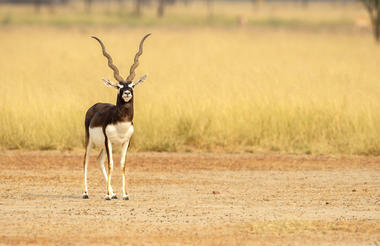
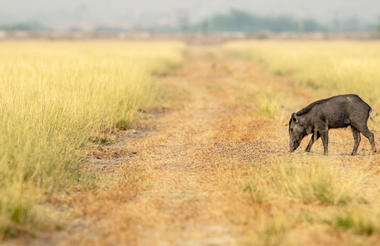
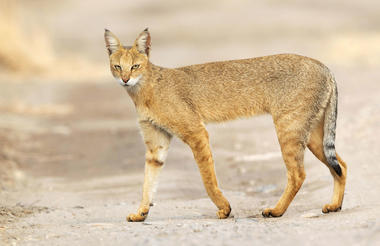
After breakfast you will taken to the airport for your return home.




